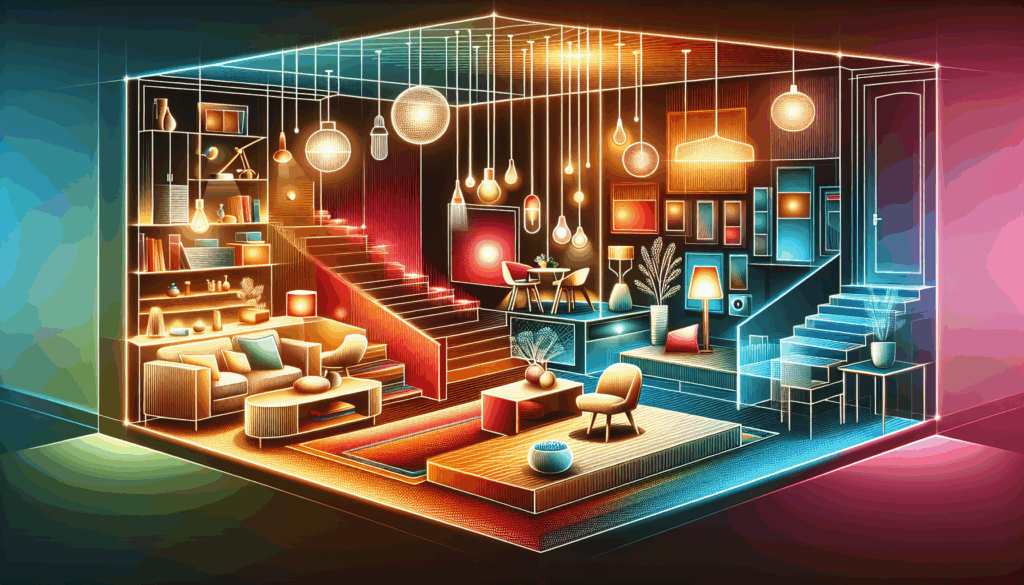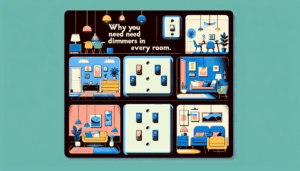Layered lighting is more than just a design trend; it’s an essential technique that can transform any space into a harmonious, functional, and aesthetically pleasing environment. As interior designers, understanding how to effectively layer light can elevate your designs and enhance the overall ambiance of your projects. In this blog, we will delve into the fundamentals of layered lighting, its benefits, and practical tips for implementation.

What is Layered Lighting?
Layered lighting refers to the strategic combination of different types of lighting to create a balanced and flexible illumination scheme within a space. It typically involves three main types of lighting: ambient, task, and accent. Each type serves a distinct purpose and contributes to the overall atmosphere of a room.
1. Ambient Lighting: This is the foundational layer of lighting that provides general illumination. Ambient lighting ensures that a room is sufficiently lit for everyday activities and can be achieved through ceiling fixtures, recessed lights, or natural light from windows.
2. Task Lighting: As the name suggests, task lighting is focused illumination designed to facilitate specific activities. This type of lighting is essential in areas where precision is key, such as kitchens, workspaces, and reading nooks. Examples of task lighting include desk lamps, under-cabinet lights, and pendant lights over kitchen islands.
3. Accent Lighting: Accent lighting is used to highlight specific features within a room, such as artwork, architectural details, or plants. This layer adds depth and visual interest to a space. Common forms of accent lighting include wall sconces, track lighting, and spotlights.
The Importance of Layered Lighting
Layered lighting is a powerful tool in interior design for several reasons:
1. Creates Mood and Ambiance
The ability to manipulate light allows designers to create a variety of moods within a space. Bright, vibrant lighting can energize a room, while softer, warmer tones can promote relaxation. By layering different types of lighting, designers can adjust the atmosphere to suit various activities or times of day.
2. Enhances Functionality
Different areas of a home or office serve different purposes, and layered lighting helps to illuminate each space appropriately. For example, a kitchen may require bright ambient lighting paired with task lighting for food prep, while a living room may benefit from a mix of ambient and accent lighting to create a cozy atmosphere.
3. Increases Visual Interest
Layered lighting adds depth and dimension to a room, preventing it from feeling flat or monotonous. By incorporating various light sources at different heights and intensities, designers can create a dynamic visual landscape that draws the eye and enhances the overall design.
4. Improves Energy Efficiency
With the right layered lighting strategy, it’s possible to use artificial lighting more efficiently. By relying on natural light during the day and strategically placing light fixtures, designers can minimize energy consumption while still achieving the desired illumination.
Practical Tips for Implementing Layered Lighting
Now that we understand the importance of layered lighting, let’s explore some practical tips for implementing this technique in your design projects.
1. Assess the Space
Before diving into lighting design, take the time to assess the space. Consider the room’s purpose, layout, and any architectural features that could be highlighted. This assessment will inform your lighting choices and help you determine the right balance of ambient, task, and accent lighting.
2. Choose the Right Fixtures
Selecting the right light fixtures is essential for achieving the desired effect. Consider the style and scale of the fixtures in relation to the room. For example, large, statement chandeliers can serve as a focal point in a dining room, while sleek, minimalist fixtures may be more appropriate for a contemporary office.
3. Incorporate Dimmers
Installing dimmer switches allows for greater control over the intensity of light in a space. This flexibility enables users to adjust the ambiance according to their needs, whether it’s bright lighting for productivity or soft lighting for relaxation.
4. Layer with Height Variation
To create a visually interesting lighting scheme, incorporate fixtures at different heights. This could mean combining floor lamps, table lamps, pendant lights, and wall sconces to create a multi-dimensional effect that enhances the room’s design.
5. Use Color Temperature Wisely
Different light sources emit light at varying color temperatures, which can significantly impact the mood of a room. Warmer tones (around 2700K-3000K) create a cozy atmosphere, while cooler tones (4000K-5000K) can feel more energizing. Be mindful of the color temperature of your light sources and how they interact with the colors in your space.
6. Highlight Key Features
Consider what elements of the room you want to draw attention to, such as artwork, architectural details, or plants. Use accent lighting strategically to highlight these features, creating a focal point that adds character to the design.
7. Balance Natural and Artificial Light
Incorporating natural light into your design can enhance the effectiveness of layered lighting. Use window treatments that allow light to filter in while providing privacy, and position mirrors to reflect natural light throughout the space.
Conclusion
Layered lighting is indeed an interior designer’s secret weapon, capable of transforming any space into a beautifully illuminated environment. By understanding the different types of lighting and how they can work together, designers can create a dynamic atmosphere that enhances functionality, mood, and visual interest. As you embark on your next design project, remember the power of light and the impact it can have on the spaces we inhabit. With thoughtful consideration and creativity, layered lighting can elevate your designs to new heights.
AI-Assisted Content Disclaimer
This article was created with AI assistance and reviewed by a human for accuracy and clarity.






Leave a Reply